

"An engineering blunder"
Charles Grey Mott - C&SLR Chairman About King William Street Station at the C&SLR shareholders meeting - February 1892

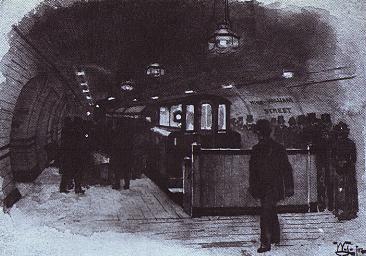 A rare picture of the interior of King William Street station, showing
a three car train set on the original single track layout.
A rare picture of the interior of King William Street station, showing
a three car train set on the original single track layout.
|
Overview:
Location:
Timespan:
Description:
Figures: |

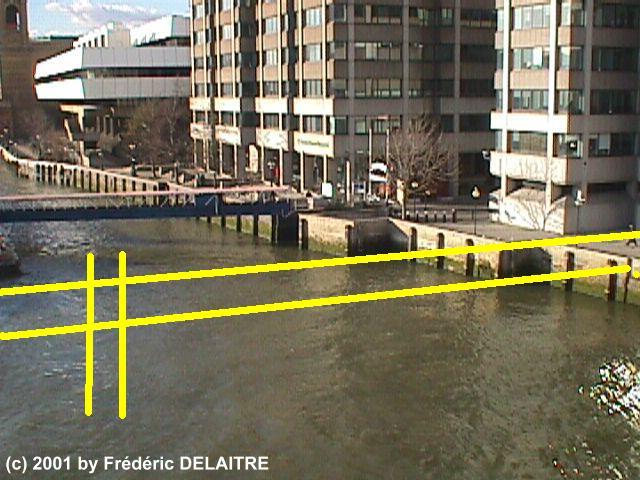 Approximate location of Old Swan Shaft and the two superimposed tunnels under the Thames.
Approximate location of Old Swan Shaft and the two superimposed tunnels under the Thames.
|
Timeline:
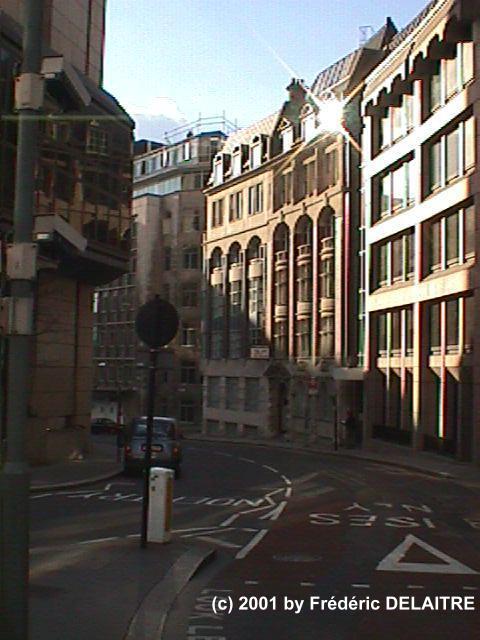
|
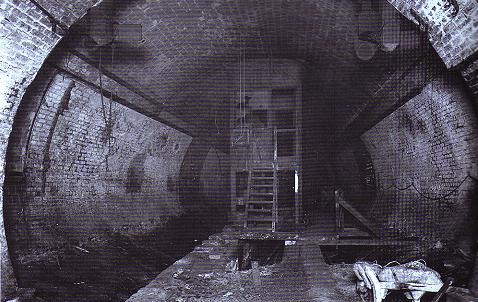
King William Street station chamber after abandonment (looking East). Note the derelict signal box and the start signals hanging from the ceiling. No background information available on this picture. However, the above may have been taken circa 1930 during a promotional press tour of the premises, as part of program from the Underground Group to dispose of the station premises.
|
Original design: The C&SLR was originally designed for cable haulage, using the Hallidie system (used on San Francisco cable cars). As a consequence, special provision had to be made at both termini in order for the operator to switch from the "up" cable to the "down" cable. Thus, King William Street was a single track station with platforms on each side. In 1888, the Patent Cable Tramway Corporation, the British company who had the ownership of Hallidie's patents, fell into bankruptcy. Newly appointed C&SLR chairman, Charles Grey Mott, decided to switch to electric traction. For some unknown reason, the Stockwell terminus was converted to island platform with two tracks and scissor crossover, while King William Street kept its original design.
Modified design: However, nothing was done to ease the severe gradients in the tunnels from the Thames. Trains coming from Borough had to face a 1 in 40 gradient followed by a 140ft radius curve under Arthur Street to access King William Street. It has been reported that a train had to make sometime multiple attempts to get over the gradient, having to coast backwards in the under-river section before trying again or seek help from the engine-in-waiting at King William Street. Some kind of "Get in or die at King William Street" approach, unthinkable nowadays, but reflecting the pioneering spirit of the C&SLR. Despite the cramped conditions and the lack of stabling space, King William Street terminus was able to handle 440 trains a day at the end of its operational life in 1899. |
"It is a real treat to be spared of tickets. Just outside the street door of the booking office are two turnstiles, with a window at each. You pay a uniform fee of twopence to the clerk at the window, and pass through, either to make your way down the spiral staircase or to enter the lift, which is close at hand. Arrived at the bottom, you step out upon the platform, and are in a well lighted, warm and dry tunnel, on the floor which is a single line of rails.
"There is very little waiting, as trains run every five minutes and by-and-by, when the line has been worked up to its normal condition of control, it is hoped to start the trains at two minutes intervals. There need be no difficulty about this, as the up and down lines are carried in separate tunnels placed at such a depth under the surface of the roads to avoid all interference with one another or with sewers and other underground structures. The comparatively small but ample platform accomodates the waiting passengers, who have at present only the bare white walls and arched roof to gaze upon. "By-and-by a rumbling is heard: it becomes a roar, and then swells into a rush as the advancing train, emitting electric sparks apparently from the region of the rails, emerge from the black mouthed tunnel. Each train is composed of three long cars, and all alike are comfortable. The atmosphere of the subterranean stations is no doubt somewhat close, but no unpleasantly so.
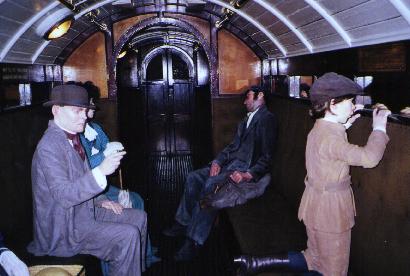
"The passenger are shut into their carriages by doors at either end, and the only ventilation is through small apertures over them. Some of the travellers seemed to think that they would not object to a little more air, and in a few instances, through some defect in the connection, the electric lights in the carriages went out when the train started, leaving one lamp at either end of a long car as the only remaining means of illumination. This, however, was an accidental occurence. It should be remembered that, except where the line is underneath the Thames and the adjoining wharf, it passes through its entire length underneath the streets, and it thus relieves the great stream of passenger traffic which now passes over London Bridge, between the Borough, Newington, and Stockwell; a relief for which the pedestrian on London Bridge is thankful.
Punch was more critical about the C&SLR, nicknaming it the "Sardine Box Railway" and describing a typical journey as follows:
"The train rocked alarmingly. It was so packed with people that getting in or out was a regular scrimmage. We entirely endorse the railway company's advertisement in that it is the 'warmest line in London'."
Also on video:
© 2001 by Frédéric Delaitre
Last modified: 02/12/16
Created: 01/03/18
